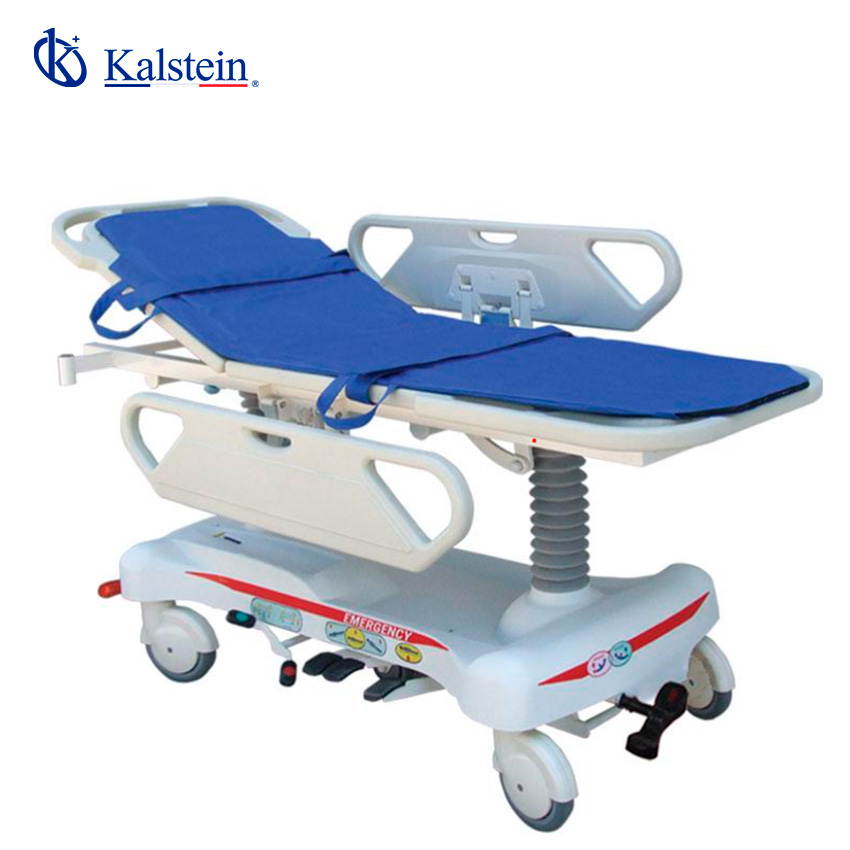In the realm of healthcare, transport stretchers are essential for ensuring the safety and comfort of patients during transit.
In this article, we will delve into the details of medical transport stretchers, highlighting their benefits, unique features, and how they solve specific problems for users.
Benefits of Medical Transport Stretchers
Medical transport stretchers offer numerous benefits for both patients and medical staff. Firstly, they ensure patient comfort during transportation. These stretchers are designed with high-quality mattresses that reduce pressure and the risk of bedsores. Additionally, many stretchers have adjustable systems that allow for changing the patient’s position, providing greater comfort and facilitating access for medical treatments.
Another important benefit is safety. Transport stretchers are equipped with side rails and braking systems that prevent falls and sudden movements during transport. This is crucial for critically ill patients or those requiring smooth and controlled transfers. The robustness and stability of these stretchers ensure the patient arrives at their destination without complications.
Unique Features of Transport Stretchers
One of the most notable features of medical transport stretchers is their versatility. They are designed to adapt to different environments, from hospitals to ambulances. Many stretchers are foldable, making them easy to store and transport in tight spaces. Additionally, some models come with omnidirectional wheels that allow for easy maneuvering in narrow areas and around corners.
Another unique feature is the adjustability. Modern stretchers allow for adjustments in height, backrest angle, and leg sections. This not only enhances patient comfort but also facilitates the work of medical staff. Quick and easy adjustments are essential in emergency situations where every second counts.
Medical Innovation in Stretcher Design
Medical innovation has led to the development of transport stretchers with advanced features. One example is the integration of hydraulic and electric systems for automatic adjustments. These systems allow precise changes in the stretcher’s position with the push of a button, saving time and effort for medical staff.
Additionally, some stretchers are equipped with integrated sensors and monitors. These devices can measure the patient’s vital signs during transport, providing real-time data to the medical team. This medical innovation is crucial for monitoring critical patients and making informed decisions en route to the hospital.
Medical Research and Stretcher Development
Medical research plays a fundamental role in developing more effective and safer transport stretchers. Studies have shown that using advanced materials, such as memory foam and antibacterial coatings, can significantly improve the patient experience. These materials not only increase comfort but also reduce the risk of hospital-acquired infections.
Moreover, medical research has led to the creation of ergonomic stretchers that minimize the physical effort of healthcare personnel. Designs that evenly distribute weight and provide lumbar support help prevent injuries among medical staff, thereby improving efficiency and safety in patient transport.
Solving Specific Problems with Transport Stretchers
One of the most common problems in patient transport is the transfer from bed to stretcher and vice versa. Modern transport stretchers are designed to facilitate this process with sliding surfaces and lift systems. These features allow for moving the patient without lifting, reducing the risk of injury for both the patient and the staff.
Another specific problem that transport stretchers solve is mobility on uneven terrain. All-terrain wheels and advanced suspension systems allow for smooth transport on various surfaces, from hospital corridors to moving ambulances. This is especially useful in emergency situations where rapid and safe transport is essential.
Frequently Asked Questions about Transport Stretchers
What type of stretcher is best for a hospital?
The choice of stretcher depends on the specific needs of the hospital. However, hydraulic or electric stretchers are often preferred for their ease of adjustment and patient comfort. Additionally, stretchers with omnidirectional wheels are ideal for hospital settings due to their maneuverability.
Are transport stretchers suitable for all patients?
Yes, transport stretchers are designed to accommodate different types of patients, from pediatric to elderly. It is important to select a stretcher that offers the necessary adjustments to provide comfort and safety for the specific patient.
Conclusion
Medical transport stretchers are an integral part of healthcare equipment, providing significant benefits in terms of comfort, safety, and efficiency. Thanks to medical innovation and ongoing research, these stretchers continue to evolve to offer better solutions to the challenges of patient transport.
By choosing a high-quality transport stretcher, hospitals and healthcare facilities can greatly improve the patient experience and operational efficiency.
We understand that you need equipment that delivers maximum value to your laboratory. We invite you to visit https://kalstein.de/category-product/medical-line/medical-transfer-stretcher/, to immerse yourself in our universe of cutting-edge technology equipment. Our prices are competitive and accessible, we combine the convenience of online shopping with the guarantee of an exceptional product. Because you deserve the best, we create and offer top-tier laboratory equipment. Make your choice today, where science comes to life. https://kalstein.de/

